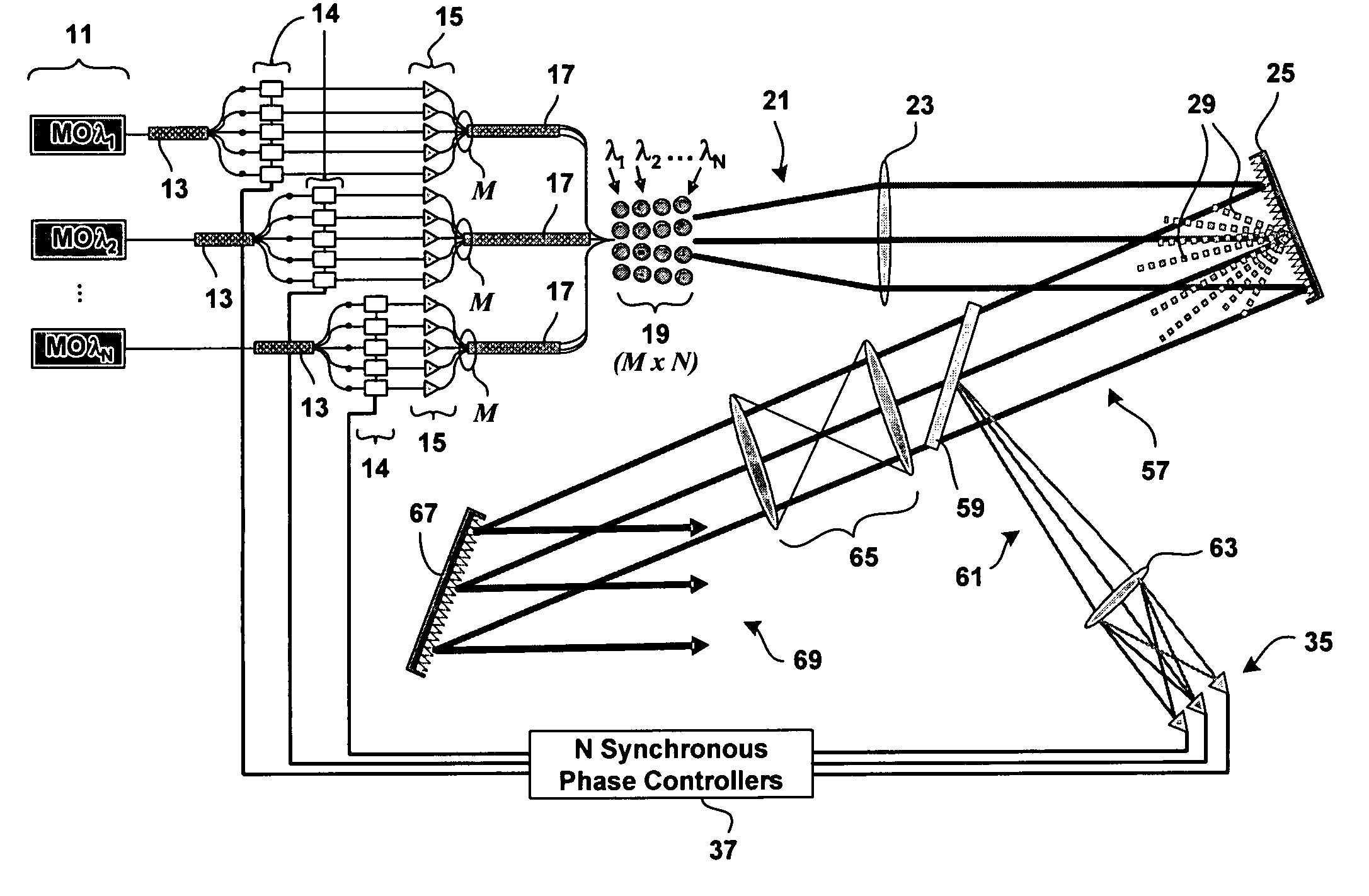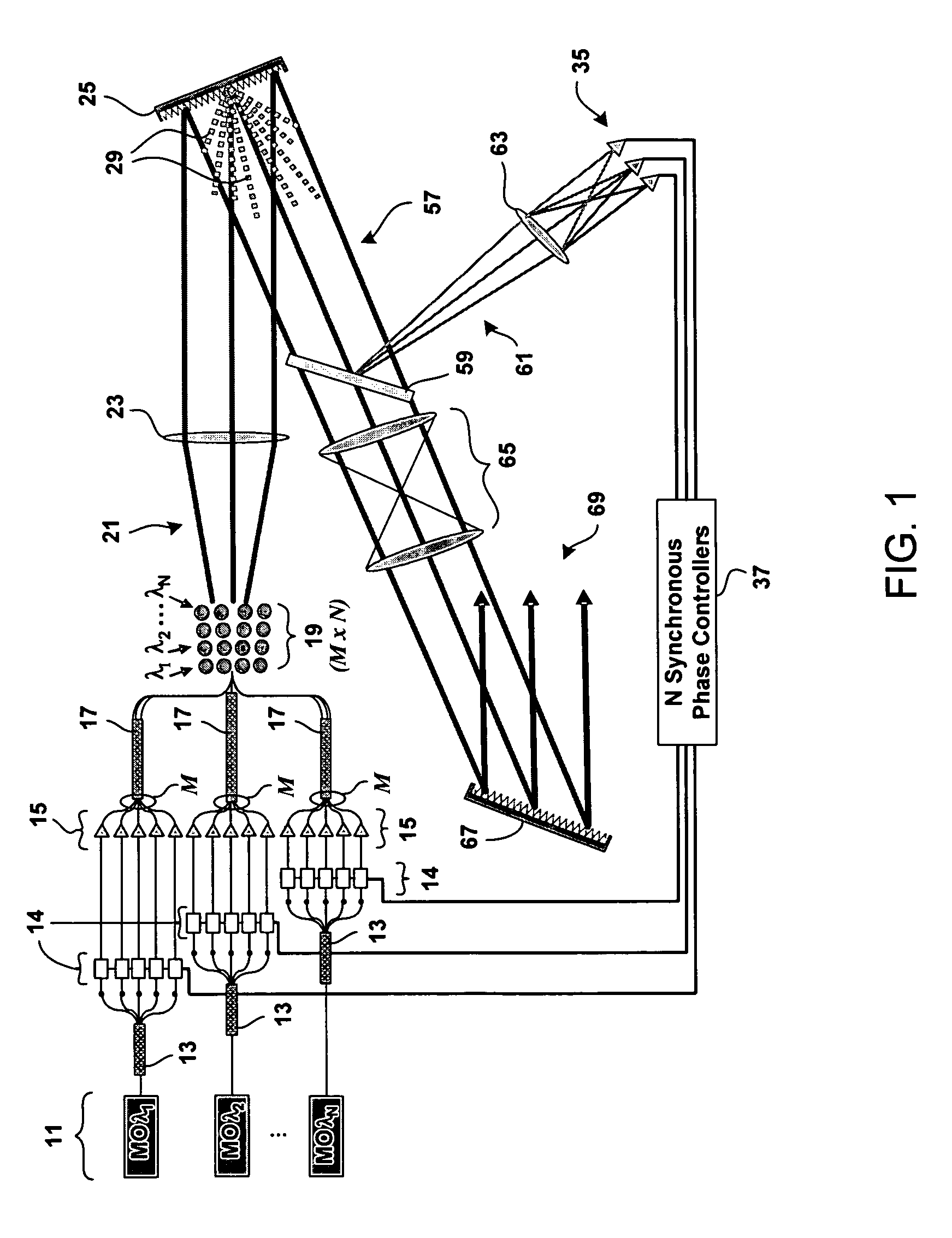Method and system for hybrid coherent and incoherent diffractive beam combining
a diffractive beam and hybrid technology, applied in electromagnetic transmission, transmission, manufacturing tools, etc., can solve the problems of limiting the size of the aperture that can be designed for any optical apparatus, limiting the advancement of high-power laser technology, and limiting the diffraction of laser beams focused to this theoretical limi
- Summary
- Abstract
- Description
- Claims
- Application Information
AI Technical Summary
Benefits of technology
Problems solved by technology
Method used
Image
Examples
Embodiment Construction
[0023]Coherent Diffractive Beam Combining
[0024]A coherent diffractive beam combining method has been proposed in co-pending U.S. patent application Ser. No. 11 / 361,352 by inventors named in the present application. In general, the diffractive beam combining method employs a DOE to enable the coherent combination of the output of a plurality of fiber amplifiers transmitting laser beams derived from a common oscillator. The beam combination method requires active phasing of the outputs from the fiber amplifiers to lock the phases of the output beams in order to optimize intensity of the composite beam by means of constructive interference. Active phasing is achieved by placing a beam splitter in the path of the composite beam that is diffracted by the DOE. The beam splitter produces a low power sample of the composite beam, and the sample is focused onto a phase detector. In the phase detector, the output phase of each constituent beam is detected by decoding signals that are encoded ...
PUM
| Property | Measurement | Unit |
|---|---|---|
| wavelength spread Δλ/λ | aaaaa | aaaaa |
| reflectivity | aaaaa | aaaaa |
| wavelengths | aaaaa | aaaaa |
Abstract
Description
Claims
Application Information
 Login to View More
Login to View More - R&D
- Intellectual Property
- Life Sciences
- Materials
- Tech Scout
- Unparalleled Data Quality
- Higher Quality Content
- 60% Fewer Hallucinations
Browse by: Latest US Patents, China's latest patents, Technical Efficacy Thesaurus, Application Domain, Technology Topic, Popular Technical Reports.
© 2025 PatSnap. All rights reserved.Legal|Privacy policy|Modern Slavery Act Transparency Statement|Sitemap|About US| Contact US: help@patsnap.com



